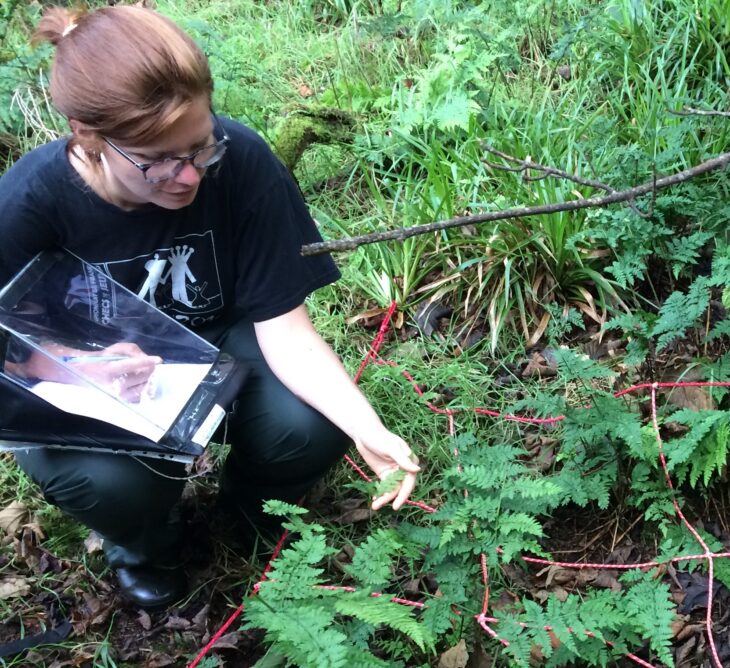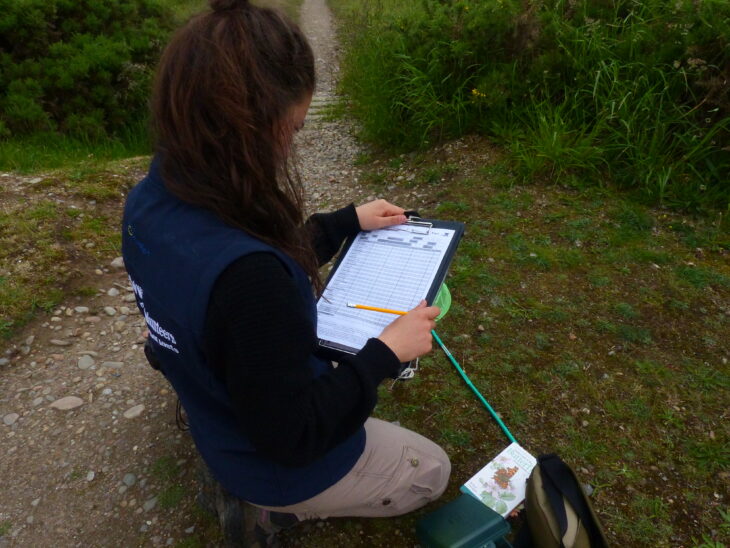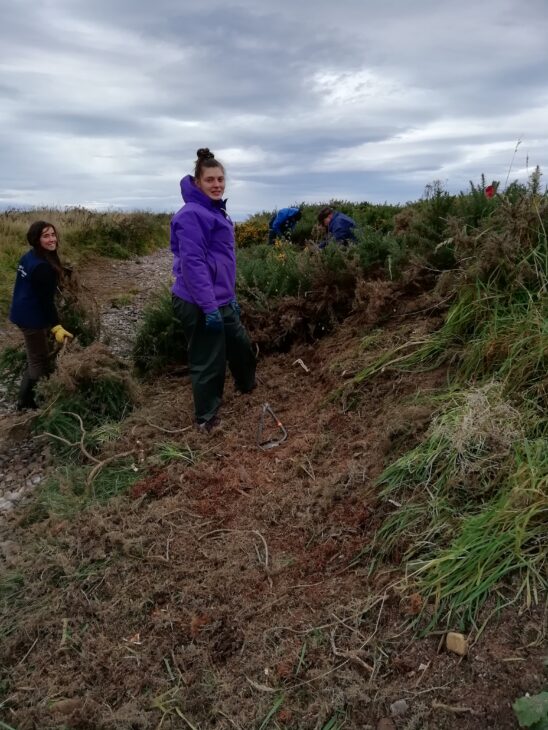Protecting wildlife at Spey Bay
Spey Bay is a coastal wildlife reserve located along the mouth of the river Spey in the north east of Scotland. It has long been recognised as an area of exceptional interest as it comprises a large variety of landscape and wildlife. However, this little haven for wildlife and some rare species needs to be managed to tackle some threats to its biodiversity, particularly the threat of invasive non-native species (INNS). Thanks to my Erasmus + volunteering placement with the Scottish Wildlife Trust I carried out two projects which I focused on Spey Bay.
The presence of INNS, such as giant hogweed or Japanese knotweed, has a negative impact on the wet alder woodland found to the east side of the river Spey. During the last three years a lot of effort has been put in (much of it thanks to the local volunteer parties) to reduce the abundance of INNS, which has allowed the reserve to reach its current recovering status. However, there had not been any established strategy to assess the habitat improvements which is why I choose to undertake this project.
I started in August by selecting 28 random plots across the woodland. Using a 2mx2m quadrant I recorded the coverage of every plant species found in each plot and fixed the studied sites with wooden posts to allow the same field survey to be undertaken over the next years. If we keep on studying the same areas, future results will give valuable information to compare the changes of INNS as well as further our knowledge of the flora that supports such rich biodiversity.

My other project was carried out in the west coastal part of the reserve which is comprised of a vegetated shingle beach which is of special interest for the rare butterfly that inhabits it, the small blue. The small blue butterfly is a protected species, widespread throughout UK but whose colonies are getting more and more isolated mostly because of habitat loss. Its larva feeds exclusively on kidney vetch, thus the presence of this plant determines whether or not a habitat is suitable for the butterfly.
Sadly, gorse is spreading over, threatening the small blue habitat within Spey Bay, as the kidney vetch plant cannot grow under its shade. The result is that in areas where the butterfly used to present healthy populations have now been reduced. From May to July, equipped with my butterfly net, on a weekly basis I walked a transect across the site following the UK Butterfly Monitoring Scheme (UKBMS) methodology to record the population. My results agree with the national small blue declining trend, but with proper management that enhances an adequate small blue habitat it will hopefully help them to recover.

If the gorse continues being cleared, more bare ground will be created giving the chance for the kidney vetch to expand again. New areas of the larva food plant would strengthen the population and, hopefully, these improvements will be recorded during the future summers by walking the transect. The records I obtained were uploaded at UKBMS so they take part in the monitoring network based all around UK.

Studying and understanding the ecosystems is essential to making good managing decisions. The change starts there and I am so glad to have been able to contribute to Scottish wildlife records in order to benefit, at least a bit, in an area like Spey Bay.
Marta Zabaleguin Bosque
Marta is taking part in a 12 month European Voluntary Service placement with the Trust funded by Erasmus+. She is working across wildlife reserves in the north of Scotland with Reserves Project Officer Michelle Henley.

Help protect Scotland’s wildlife
Our work to save Scotland’s wildlife is made possible thanks to the generosity of our members and supporters.
Join today from just £3 a month to help protect the species you love.
Preface
Spey Bay is a coastal wildlife reserve located along the mouth of the river Spey in the north east of Scotland. It has long been recognised as an area of …
